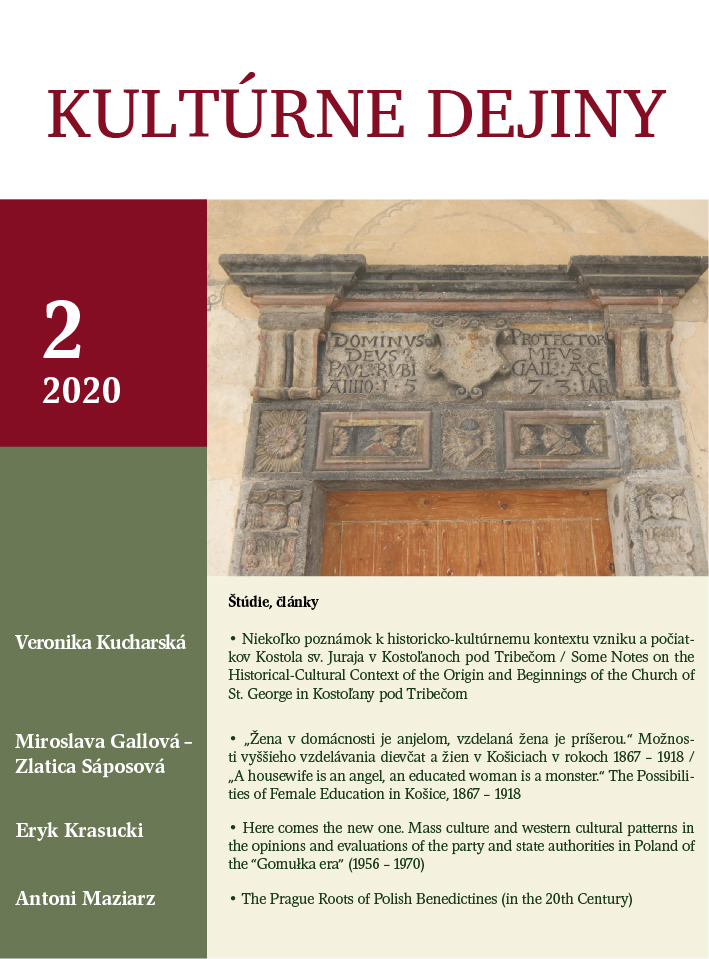Niekoľko poznámok k historicko-kultúrnemu kontextu vzniku a počiatkov Kostola sv. Juraja v Kostoľanoch pod Tribečom
Some Notes on the Historical-Cultural Context of the Origin and Beginnings of the Church of St. George in Kostoľany pod Tribečom
Author(s): Veronika KucharskáSubject(s): Archaeology, Theology and Religion, 6th to 12th Centuries
Published by: VERBUM - vydavateľstvo Katolíckej univerzity v Ružomberku
Keywords: Church of St. George; Kostoľany pod Tribečom; Nitra; St. Clement; Ss. Constantine-Cyril and Methodius; 9th – 11th Century;
Summary/Abstract: In the latter half of the 9th century, Nitra can be perceived as a centre that not only emitted power but also a significant cultural and spiritual energy to both its immediate and distant surroundings. This would create unique local spiritual and cultural centres that would survive far beyond the significance of their region thanks to their survival. One of them is still little-known Church of St. George in Kostoľany pod Tribečom. The paper deals with the period of origin and beginnings of the Church of St. George in the context of activities and influence of the Cyrillo-Methodian mission in the territory of the Principality of Nitra and the following period. It particularly re¬flects recent research, which has significantly raised other issues and problems around the church’s or donor’s era, and incorporates them into the wider cultural-historical context of the period. Due to its location near the centre of the Principality of Nitra, Kostoľany pod Tribečom should undoubtedly fulfil an important representative and “enlightenment” function in the sense of advancing Christian ideology. Reconsidering the current patrocinium of St. George offers a hypothesis of the original consecration of the church to St. Clement, whose cult in the territory of Great Moravia established and expanded significantly after the remains of the martyr were transferred to Rome by Constantine and Methodius. It also points out the degree of participation of the power and intellectual elites of the Principality of Nitra (and following the demise of Great Moravia) in the emergence of church buildings and ideological wall painting programmes.
Journal: Kultúrne dejiny
- Issue Year: 11/2020
- Issue No: 2
- Page Range: 191-217
- Page Count: 27
- Language: Slovak

